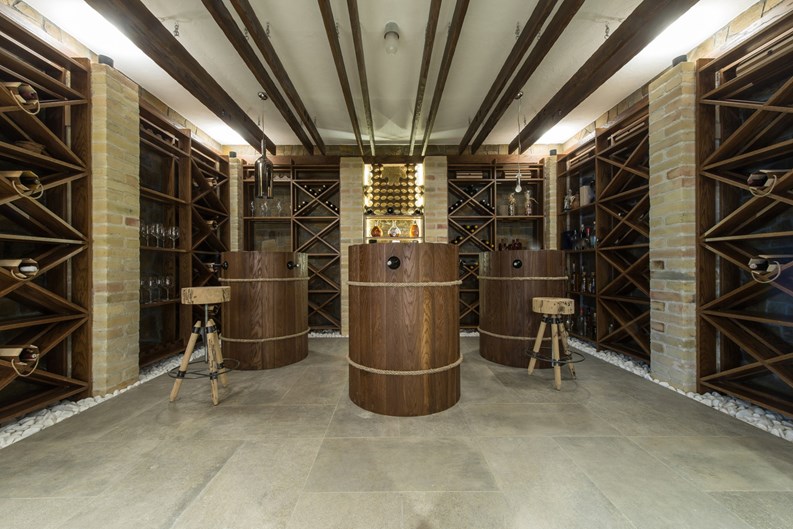Once upon a time, when someone purchased a condo or co-op, their ownership came with the privilege of using the building’s amenities. Those who lived in a building with a fitness room equipped with treadmills and weights considered themselves fortunate, and those whose building had a swimming pool were downright envied.
Fast forward to today when full-service gyms have replaced bare-bones fitness rooms, and are as commonplace an amenity as a garage or a laundry room. When it comes to today’s high-end amenities, developers have upped the ante; the envied are now those with climate-controlled wine cellars, private movie screening rooms, in-house massage therapists, and even commercial kitchens that residents can use to host parties.
The residential building boom in many urban markets – both before the crash of ‘08 and since the subsequent recovery – has set off something of an arms race among developers eager to cash in on the desire of co-op/condo buyers for luxury, high-end amenities.
“Having high-end amenities corresponds to the famous architect designing a building,” says Patrick V. Lilly, licensed associate real estate broker with CORE in New York City. “People will pay more to live in a building built by a famous architect than others that weren’t. An element of luxury is comfort, but there’s a perceived element that your luxury is fancier and better than everyone else’s. Does a really great architect bring something more interesting to the table than a less well-known architect? Yes and no. I don’t think a standard architect would come up with certain designs, and if design is part of your aesthetic, that’s important to you – and you’ll pay to live there.”
Home-tel?
“What you would once get in a high-end hotel, you now get in a high-end condo or co-op,” says Lilly. “It’s been during the last five years that luxury keeps on redefining itself in New York. What once was luxury is now never enough. People want more and more.”
For example, at 50 United Nations Plaza in Manhattan, not only do residents of the 88-unit condo tower have access to a full-service fitness center with all the equipment, machines, and training space of a commercial gym, they can also use a sauna and steam room, massage therapy room, wine storage and a children’s playroom.
Although it’s rental property, the MiMA building located on 42nd Street just off Times Square is also a perfect example of a luxury building that offers high-end amenities, such as a heated indoor lap pool, full-size indoor basketball and volleyball courts, indoor and outdoor movie screening areas, an internet café, and even a Dog City pet spa.
“Some buildings even have cold storage on the first floor for when their food deliveries arrive, so there is a place to put them,” says Lilly. “There are also buildings with wine cellars, and those that have garages with a rotating mechanism that pulls out your car.”
At 15 Central Park West, residents can purchase individual wine cellars (with solid oak cabinetry) and have use of a private screening room designed by famed architect Theo Kalomirakis. In addition to the space, a full staff is on site to further cater to residents’ needs and requests.
But the crème de la crème of high-end amenities is available at 1 Seaport, the first all-glass residential tower on the waterfront of the historic South Street Seaport district at the southern tip of Manhattan. Here, residents have the ability to book the use of an actual yacht for parties and cruises on the waterways surrounding Manhattan. According to reports, condo owners at the development will be able to reserve one of three Hinckley yachts up to three times a week, with staff included, at no additional cost to the owner beyond docking and fuel.
Cleaning and Insuring
According to Todd M. Ross, managing director at One Point Brokerage, LLC in New York City, “Amenity space is really common space put to specific use for the benefit of the owners and residents of the building. In today’s development terminology, amenities are meant to denote a special use of common space such as a pool, spa, wine room, movie room, or gym; it is more marketing terminology than insurance terminology,” he explains. No matter how it’s defined in your governing documents, proper insurance of all amenities and common spaces is a must, says Ross. “Like any other common element and/or common space, a board is required to provide adequate insurance coverage for areas that they own and/or control.”
These amenities make for some great marketing opportunities to entice high-end buyers to get past the front door to buy a unit. However, whether high-end or not, someone has to take care of these common areas and fancy perks. If the Smith family uses the huge commercial kitchen to cook for their party of 100, who makes sure that the area is clean for the next resident? Once the party is over and the partygoers are long gone, who cleans up the mess?
When it comes to other common areas, like hallways, lobbies, and rooftop social spaces, it is the responsibility of the property manager to make sure the entire property is safe and secure for everyone. “Generally, the staff or property manager would clean up the mess after the residents use the kitchen,” says Lilly. “Buildings typically have the concierge bring in cleaning services.”
That being said, residents should assume some responsibility to keep things clean and safe when they are done using the common areas. Let’s face it though; things happen, and having more spaces for a resident to, say, swing a tennis racquet, or slip on a banana peel in a commercial kitchen can bring about some insurance risks. What are their implications, and how are these more unusual or high-end amenities insured in case someone gets hurt?
Like all buildings, it comes down to having insurance, regardless of whether the amenity in question is a lobby area or a fancy commercial kitchen. Insurance will help protect a building – and the owners’ investments – if the building is damaged or destroyed by fire or other causes, and public liability coverage protects the building if someone is hurt on the property and sues.
“In a movie room, all you have to insure is the screen and the furniture,” says Steve Principe of The Principe Agency in East Meadow, New York. “Can the residents get hurt? Can they hit their head on a chair? That’s not that big of a risk, but some things – like a tennis court, for example – would be more of an insurance risk. Even so, anyone who gets hurt in a building is covered, no matter what you put in your building, if you have that insurance.”
Other luxury amenities come with more unique insurance challenges. Take wine cellars, for example. Although an empty wine cellar would be covered under the building’s insurance policy, the actual wine that’s kept there is another matter.
“If you want to insure the wine itself, who is it for?” says Principe. “If it’s for use by every single unit owner, it’s a whole different ballgame. There are some insurance companies who offer specialized wine insurance.”
By contrast, if the residents are allowed space to store their own personal wine collection in the building’s cellar, there are individual policies to cover those. According to WineMag.com, coverage is relatively affordable, and generally doesn’t have a deductible. While rates vary by insurer, on average the wine owner will spend 50 cents per $100 of coverage. A wine collection insured at $250,000 would cost roughly $1,250 a year to insure.
The buildings that offer commercial kitchen space for their residents open up another unique set of liability issues. What if a resident uses the kitchen to show off their culinary skills to their friends and family and, in the process, singes off their eyebrows while sauteeing shallots for their evening party? Don’t worry, it’s covered.
“Every building has a common area slip-and-fall liability policy,” says Principe. “If someone should fall in the lobby, or get tripped up on a step or break an arm, they will sue the building, but the building should have coverage. You should, however, make your insurance company aware that there is a new risk exposure.”
Boards would do well to use the experts available when buying, updating, or changing their insurance coverage. Insurance pros advise boards to make sure their broker and insurance company are always aware of the amenities to ensure proper coverage. Insurance requirements and needs don’t remain static, says Ross. “Bylaws require boards to carry adequate insurance for their property and operations,” he says. “As a matter of corporate governance, insurance is required not so much for amenities per se, but for common elements and common space/area that comprise the co-op, condo, or HOA.” He also recommends consulting with not only the property insurance adjuster, but also the accountant and the attorney, for a truer picture of adequate property protection. “When price is the only consideration taken into account, you get what you pay for—in both product and services.”
Wanting My Own
Interestingly, more and more unit owners are adding high-end amenities that used to be more the realm of shared perks right into their units. Matthew Donachie, Field Project Manager for Peter Di Natale & Associates, Inc. in Cold Spring, has recently completed projects for co-op and condo owners that included a wine cellar for a celebrity’s individual residence, private movie theater for an individual residence, a sound proof space for an owner, and space for someone who likes to work on his motorcycles. “I even had one client who owned several adjoining apartments in a Manhattan building, so he combined them into one big children’s soccer field,” he says.
These projects come with hefty price tags. A private wine cellar, depending on the finishes chosen, can run $120K to $130K. The private home theater: $130-$170k, depending on quality of seats (plush versus functional), lighting, type of soundproofing (wool fabric for wall covering is sometimes preferred and pricier) etc. The kids’ soccer field cost between $150-$170k.
“People’s needs are changing,” says Donachie. “People like the idea that it’s theirs and not just anyone can use it.”
What’s Next?
As more buildings are constructed, it will be interesting to see what’s next on a developer’s mind. After all, wanting to stand out from the crowd will always be there and the developer will look for something bigger and better to give their residents that no one else has. There are already some buildings with private jet access, helipad space on the top of the building and an IMAX movie room (one step up from a regular movie room). Maybe something the Jetsons would have been jealous of? Only time will tell.
Lisa Iannucci is a freelance writer and editor, and a frequent contributor to The Cooperator.







Leave a Comment